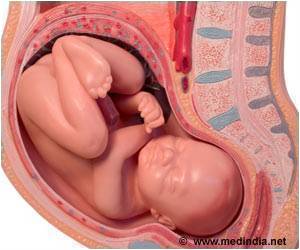- Maternal perception of fetal movements: onset and associated factors - (https://pubmed.ncbi.nlm.nih.gov/35779269/)
- Fetal Movement - (ttps://www.ncbi.nlm.nih.gov/books/NBK470566/)
- Excessive fetal movements are a sign of fetal compromise which merits further examination - (https://pubmed.ncbi.nlm.nih.gov/29406989/)
- The Development and Shaping of the Brain - (https://www.ncbi.nlm.nih.gov/books/NBK234146/)
- Sleep-wake cycles in normal fetuses - (https://pubmed.ncbi.nlm.nih.gov/19434415/)
- Modeling the biomechanics of fetal movements - (https://www.ncbi.nlm.nih.gov/pmc/articles/PMC4945693/)
- Fetal response to induced maternal emotions - (https://pubmed.ncbi.nlm.nih.gov/20169432/)
- Doppler Ultrasound Technology for Fetal Heart Rate Monitoring: A Review - (https://pubmed.ncbi.nlm.nih.gov/31562079/)
About
Babies' kicks in the womb, also known as fetal movements or kicks, are an essential aspect of pregnancy. These movements typically begin around the 18th to 25th week of gestation, indicating the development of the baby's neuromuscular system(1✔ ✔Trusted Source
Maternal perception of fetal movements: onset and associated factors
Go to source). As pregnancy progresses, these movements become more pronounced, with the baby's kicks often becoming noticeable to the mother.
Fetal movements serve various purposes during pregnancy. They provide crucial feedback about the baby's health and development, indicating that the baby is active and thriving within the womb(2✔ ✔Trusted Source
Fetal Movement
Go to source). Additionally, fetal movements play a role in promoting healthy musculoskeletal development and preparing the baby for life outside the womb.
Did You Know?
Unborn babies respond to external stimuli, such as sounds and light, by increasing their movements. These subtle yet significant reactions demonstrate the baby's developing sensory abilities and connection to the surrounding environment even before birth.What Insights Do Your Baby’s Womb Kicks Provide?
Monitoring Fetal Health:
Baby's kicks serve as a barometer of fetal health. A decrease in fetal movements or a significant change in kicking patterns may indicate potential issues with the baby's well-being, such as fetal distress or growth restriction(3✔ ✔Trusted SourceExcessive fetal movements are a sign of fetal compromise which merits further examination
Go to source). Therefore, monitoring fetal movements is an important aspect of prenatal care, helping healthcare providers assess the baby's health and intervene if necessary.
Assessing Neurological Development:
Fetal movements offer insights into the baby's neurological development. Research suggests that the frequency and complexity of fetal movements increase as the baby's nervous system matures. Therefore, active and robust kicking activity may indicate healthy neurological development and proper functioning of the baby's central nervous system(4✔ ✔Trusted SourceThe Development and Shaping of the Brain
Go to source).
Indicators of Sleep Patterns:
Fetal movements, including kicks, are not random but follow distinct patterns, including periods of activity and rest. Studies have shown that unborn babies experience periods of rapid eye movement (REM) sleep in the womb, characterized by increased fetal movements, including eye movements and body jerks. Monitoring fetal movements can provide insights into the baby's sleep-wake cycles and overall sleep patterns, which are essential for brain development(5✔ ✔Trusted SourceSleep-wake cycles in normal fetuses
Go to source).
Biomechanics of Fetal Movements:
Understanding the biomechanics of fetal movements can offer valuable insights into the baby's health and development(6✔ ✔Trusted SourceModeling the biomechanics of fetal movements
Go to source). Advanced imaging techniques and wearable motion sensors have enabled researchers to study the biomechanics of fetal movements in unprecedented detail, shedding light on the coordination and complexity of fetal movements. These insights contribute to the understanding of fetal development and may have implications for assessing fetal well-being in clinical settings.
Promoting Bonding Between Mother and Baby:
Feeling the baby's kicks is a profound and emotional experience for expectant mothers, fostering a sense of connection and bonding with their unborn child(7✔ ✔Trusted SourceFetal response to induced maternal emotions
Go to source). The sensation of the baby's movements serves as a tangible reminder of the life growing within the womb, strengthening the mother-baby bond and enhancing the overall experience of pregnancy.
Fetal Movements in Multiple Pregnancies
Fetal movements in multiple pregnancies, such as twins, triplets, or higher-order multiples, can vary significantly from singleton pregnancies. While each fetus may exhibit individual movement patterns, the presence of multiple babies in the womb can result in a more crowded environment, potentially influencing the frequency and intensity of fetal movements. Expectant mothers carrying multiples may notice differences in movement sensations and may experience challenges in distinguishing between the movements of each baby. Additionally, factors such as placental location and amniotic fluid volume can impact fetal movement patterns in multiple pregnancies. Healthcare providers closely monitor fetal movements in multiple pregnancies to ensure the well-being of each baby and may recommend additional tests, such as ultrasound scans, to assess fetal growth and development.
Role of Healthcare Providers in Fetal Movement Monitoring
Healthcare providers play a crucial role in educating expectant mothers about the importance of monitoring fetal movements throughout pregnancy. Obstetricians, midwives, and other healthcare professionals guide expectant mothers on how to perform kick counts and provide guidance on when to seek medical attention if they notice changes in fetal movement patterns. During prenatal visits, healthcare providers assess fetal well-being through various methods, including fetal heart rate monitoring and ultrasound scans(8✔ ✔Trusted Source
Doppler Ultrasound Technology for Fetal Heart Rate Monitoring: A Review
Go to source). They use this information to monitor fetal growth and development and to identify any signs of potential complications, such as fetal distress or placental insufficiency. Healthcare providers also offer support and reassurance to expectant mothers, addressing any concerns or questions they may have about fetal movement monitoring.
Fetal Movement Patterns in Different Trimesters
Fetal movement patterns undergo significant changes throughout each trimester of pregnancy. In the first trimester, fetal movements are typically sporadic and may be imperceptible to the mother due to the small size of the fetus. By the second trimester, fetal movements become more frequent and recognizable, with expectant mothers often beginning to feel their baby's kicks and flutters. The third trimester is characterized by increased fetal activity, as the baby grows larger and has less space to move within the womb. During this time, expectant mothers may notice a distinct pattern of activity, with periods of increased movement followed by periods of rest. Healthcare providers monitor these movement patterns to ensure the baby's well-being and may recommend additional tests if there are concerns about fetal activity.

Future Directions in Fetal Movement Research
The field of fetal movement research continues to evolve, with ongoing advancements in technology and methodology. Future directions in fetal movement research may involve the development of innovative tools and techniques for monitoring fetal activity, such as wearable devices equipped with advanced sensors. Artificial intelligence and machine learning algorithms may be employed to analyze fetal movement data and identify patterns associated with normal fetal development and well-being. Researchers may also explore the role of fetal movements in predicting pregnancy outcomes and assessing the effectiveness of interventions aimed at improving fetal health. Additionally, longitudinal studies tracking fetal movements from early pregnancy through birth may provide valuable insights into the relationship between fetal activity and long-term health outcomes. Overall, future research in this area holds promise for enhancing our understanding of fetal development and improving prenatal care practices.
A baby's kicks in the womb provide valuable insights into the baby's health, neurological development, sleep patterns, and biomechanics of movement. Monitoring fetal movements is an essential aspect of prenatal care, enabling healthcare providers to assess fetal well-being and intervene if necessary. Moreover, feeling the baby's kicks is a special and cherished experience for expectant mothers, fostering a deep sense of connection and bonding with their unborn child.








